Amarkantak
| Author:Laxman Burdak, IFS (Retd.) |
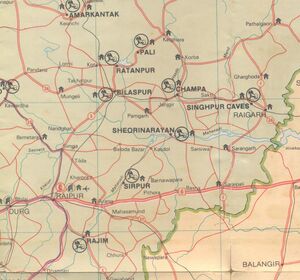
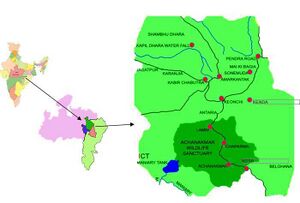
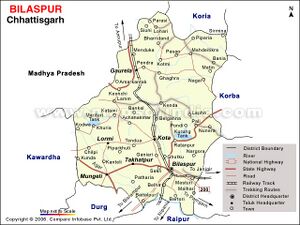
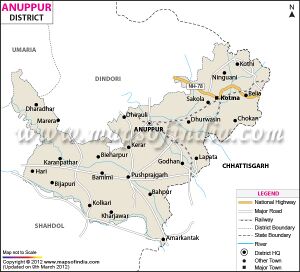
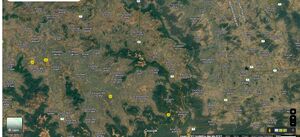
Amarkantak (अमरकंटक) is a pilgrim town in Pushparajgarh tahsil of Anuppur district in Madhya Pradesh, Amarkantak region is a unique natural heritage area and is the meeting point of the Vindhya and the Satpura Ranges, with the Maikal Hills being the fulcrum. This is the place where the Narmada River, the Son River and Johilla River emerge. It is located on Ram Van Gaman Path.
Variants
- Amarakantaka (अमरकंटक) (AS, p.29)
- Amarakuta (अमरकूट) (म.प्र.) (AS, p.30)
- Amrakuta (आम्रकूट) (AS, p.67)
- Vanshagulma वंशगुल्म (AS, p.828)
- Vanshagulma (वंशगुल्म) Mahabharata (III.83.9)
- Chandra (चन्द्र) = Chandra Parvata (चंद्रपर्वत) (AS, p.316)
- Soma Parvata (सोम पर्वत) (AS, p.316)
- Soma सोम दे. Somodbhava सोमोद्भवा (AS, p.989)
- Amarakantak hill, is called Mekala-kanyakā (मेकल-कन्यका) (p.84)[1]
Origin of name
Amarkantak is a combination of two Sanskrit words, amara (immortal) and kantaka (obstruction). The poet Kalidas has mentioned it as Amrakuta (आम्रकूट), which later became Amarkantaka.[2]
Location
Amarkantak is located in the state of Madhya Pradesh in India at 22.67°N 81.75°E. It has an average elevation of 1048 metres. Roads running through Rewa, Shahdol, Anuppur, Jabalpur, Katni and Pendra connect it. The nearest railway stations are Anuppur and Pendra Road 43 km via Keonchi and only 28 km via Jwaleshwar. The nearest airport is Dumna Jabalpur (Jabalpur Airport) in the city of Jabalpur, Madhya Pradesh (240 km) which has daily flight service to Delhi and Mumbai.
Amarakantak Statue Inscription: (Kalachuri) Year 922 (=1170 AD)
[p.586]: This inscription was first brought to notice by Sir Richard Jenkins in his 'Memorandum of Inscriptions found engraved on stones in Chhattisgher'14 It was subsequently
14 A. R , Vol XV, p, 506, Jenkins thought that the image represented Rëvâ Nâyaka.
[p.587]: mentioned by Sir A Cunningham's Assistant, Mr. Beglar1, and finally noticed by Mr R. D. Banerji in his Progress Report of the Archaeologiçal Survey, Western Circle for 1920-21, p. 55. It is edited here for the first time from excellent impressions kindly supplied by the Superintendent, Archaeological Survey, Central Circle, Patna.
The inscription is incised on the pedestal of a statue at Amarakantak in Vindhya Pradesh. The statue is of a male person sitting cross-legged with hands clasped in adoration and holding a lotus-bud. On either side of him stands a female figure with a fly-whisk in her right hand. On his head there is an umbrella and on either side of it, a Gandharva carrying a garland.
The inscription contains four lines on the proper right and one line giving the date on the left. It is in a perfect state of preservation. The average size of the letters in the lines on the proper right is .4" and in that on the left is 5 ". The characters are Nâgari. ....The language is Sanskrit. Except for the date, the inscription is metrically composed. There are only two verses, both of which are numbered.
The object of the inscription is to record that the statue is an exact representation of Nârâyana, the son of Màdhavâksha who was the Superintendent of Writing 'here at Ratnapura'. The wording of the description suggests that the statue was made at Ratnapura and later on removed to Amarakantak.
The inscription is dated in the year 922 (expressed m decimal figures only) of an unspecified era. This date, judged by the characters, must be referred to the Kalachuri era. As an expired year, it would correspond to 1170-71 A. C.
1. C A S I R, Vol VII, pp 233 ff
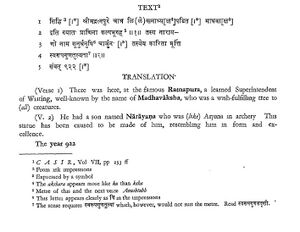
History
This region was inhabited by the The Mahabharata Tribe Mekala, which took part in Mahabharata War. Mekala (मेकल) fought on the side of the Kauravas (VIII. 17.2, VI. 83-9; 47.13). Mekala is the hill range in Gondwana from where the Narmada flows, and has been identified with Amarkantaka. [3]
The ancient temples of Kalachuri period are in the south of Narmadakund, just behind it. These were built by Kalachuri Maharaja Karnadeva (1041–1073 AD).[4]
Popular Indian Mystic and Poet Kabir is said to have meditated on Kabir Chabutra, also called the platform of Kabir, situated in the town of Amarkantak.[5]
Amarkantak is known as the king of pilgrimages, or Tirthraj, because the town has many temples and holy places.[6] It is narrated in the Hindu scriptures like the Puranas that Amarkantak is the place where celestial beings, sages and others obtained spiritual powers.[7]
Ancient temples of Kalachuri period: The ancient temples of Kalachuri period (famously known as Trimukhi Temple) are in the south of Narmada Kund, just behind it.[8] These were built by Kalachuri Maharaja Karnadeva (1041–1073 AD.)[9]
Sarvodaya Jain temple: The Shri Yantra Mandir in Amarkantak is in the form of a Maha Meru which is a three-dimensional representation of the Shree Yantra or Shri Chakra. This temple is located on the hallowed land that is the birthplace of the sacred Narmada River in Amarkantak, Annupur District, Madhya Pradesh.
Places of tourist importance
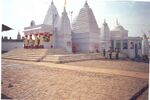
Amarkantak being a unique natural heritage is very rich in biodiversity. It has got a number of places of scenic beauty. Apart from this it is source of origin of three important rivers. It is a great pilgrim center for Hindus. It is thus a great-unexplored tourism destination.
Narmadakund and temples
At the place of origin of Narmada River there is an open pool known as Narmadakund. Around this kund there are number of temples such as Narmada and Shiva temple, Kartikey temple, Shri Ram Janki temple, Annapurna temple, Guru Gorakhnath temple, Sri Shuryanarayan temple, Vangeshwar Mahadev temple, Durga temple, Shiv Pariwar, Siddheswar Mahadev temple, Sri Radha Krishna temple, Eleven Rudra temple etc.
Ancient temples of Kalchuri period
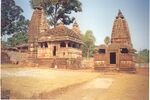
The ancient temples of Kalchuri period are situated in the south of Narmadakund just behind it. These were built by Kalchuri Maharaja Karnadeva (1042-1072 AD). The Machhendranath and Pataleshwar temples are excellent examples of architecture. There is also Keshav Narayan temple built by the Bhonsle ruler of Nagpur in the 18th century.
Sonemuda
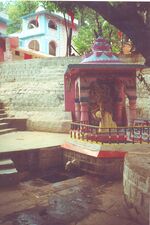
Sonemuda is the place of origin of Sone River. It is situated at a distance of 1.5 km from Narmadakund at the very edge of Maikal Mountain. The Sone River cascades from the mountain in a waterfall hundreds of feet long. As we stand on the viewing platform facing east, we see a panorama of forested hills and valleys. According to Megasthenes and other Aryan writers the river Sone gets its name from gold as the gold dust is found in the water of Sone.
Mai ki Bagiya (Goddess garden)
A grove of trees in dense forests situated at a distance of one km from Narmadakund is named “Mai ki Bagiya” in honour of the goddess Narmada. In this natural garden Mango, Banana and other fruit trees along with Gulbakavli, roses and other flower plants are there.
Kapildhara (Kapil waterfall)
Six km northwest of Narmadakund is situated the famous waterfall called Kapildhara with a fall of about hundred feet. According to scriptures, Kapil Muni lived here. There is a scene of natural beauty with mountains and dense forest down hills. According to ‘Vindhya Vaibhav’ Kapil Muni performed severe austerities here and received divine light. He also wrote ‘sankhya philosophy’ (an advanced treatise on mathematics) at this place. The Kapileshwar temple is also situated nearby. The surrounding mountains are full of caves where saints have been performing their spiritual practices.
Kabir chabutra (the platform of saint Kabir)
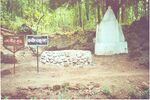
It is an old belief that the great saint Kabir performed austerities here and achieved spiritual powers. It is therefore a holy place for the Kabir panth sect. The local people, the Panikas, consider Kabir Chabutara as one of the holiest places of the Kabirpanthis because Sant Kabir spent many years here in meditation.At this very place Kabir and Nanak met and discussed spiritual matters and introduced the way of better living for human being. It is also the meeting point of three districts, Anuppur and Dindori districts of Madhya Pradesh and Bilaspur district of Chhatisgarh. There is also a Kabir waterfall here.
Shri Jwaleshwar Mahadev (the temple of Shiva)
The Jwaleshwar temple and the source of origin of the third river Juhila River is situated at a distance of 8 km from Amarkantak on Shahdol road. According to ‘Vindhya Vaibhav’ Lord Shiva himself established a Shivling here and also scattered crores of other Shivlings over Maikal Mountain. According to puranic traditions a rectangular area containing crores of Shivlings is known as ‘Maha Rudra Meru’ and is the abode of lord Shiva himself. There are only two ‘Maha Rudra Meru’ places Varanasi and Amarkantak. Lord Shiva and Parvati live here because of this special spiritual quality.
Pinus caribaea plantations
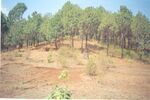
Pinus caribaea, known as tropical pine, was planted by Forest Research Institute Jabalpur in 1968 at Amarkantak and in 1972 at Bastar on advice of Forest Research Institute, Dehradun on the recommendations of National Commission on Agriculture looking to the future demand of quality pulpwood. This work was undertaken under a World Bank Technical Assistance Project by clearing natural sal forests. The naturalists and environmentalists in India raised controversy over it; ultimately the project of tropical pine plantation was abolished.[10]
अमरकूट
विजयेन्द्र कुमार माथुर[11] ने लेख किया है... अमरकूट (म.प्र.) (AS, p.30): रीवा से 97 मील दूर एक पहाड़ी है जो अमरकंटक का ही एक भाग है. यह गहन वनों से आच्छादित है. कई विद्वानों का मत है की मेघदूत 1,16 में वर्णित आम्रकूट यही है.
अमरकंटक
विजयेन्द्र कुमार माथुर[12] ने लेख किया है कि....अमरकंटक (मध्य प्रदेश) (AS, p. 29): रीवा से 160 मील और पेंड्रा रेलवे स्टेशन से 15 मील दूर नर्मदा तथा सोन नदी के उद्गम-स्थान के रूप में प्रख्यात है। अमरकंटक पठार समुद्रतट से 2500 फ़ुट से 3500 फ़ुट तक ऊँचा है। नर्मदा का उदगम एक पर्वतकुण्ड में बताया जाता है। अमरकंटक को आम्रकूट भी कहते हैं। यह तीर्थ, श्राद्ध-स्थान और सिद्ध क्षेत्र के रूप में प्रसिद्ध है। अमरकंटक में नर्मदा के उद्गम स्थान के पर्वत को सोम भी कहा गया है। अमरकंटक ऋक्षपर्वत का एक भाग है, जो पुराणों में वर्णित सप्तकुल पर्वतों में से एक है।
मन्दिर और मूर्तियाँ: अमरकंटक में अनेक मन्दिर और प्राचीन मूर्तियाँ हैं, जिनका सम्बन्ध महाभारत के पाण्डवों से बताया जाता है। किन्तु मूर्तियों में से अधिकांश पुरानी नहीं हैं। वास्तव में प्राचीन मन्दिर थोड़े ही हैं- इनमें से एक त्रिपुरी के कलचुरि नरेश कर्णदेव (1041-1073 ई.) का बनवाया हुआ है। इसे कर्णदहरिया का मन्दिर भी कहते हैं। यह तीन विशाल शिखरयुक्त मन्दिरों के समूह से मिलकर बना है। ये तीनों पहले एक महामण्डप से संयुक्त थे, किन्तु अब यह नष्ट हो गया है। इस मन्दिर के बाद का बना हुआ एक अन्य मन्दिर मच्छींद्र का भी है। इसका शिखर भुवनेश्वर के मन्दिर के शिखर की आकृति का है। यह मन्दिर कई विशेषताओं में कर्णदहरिया के मन्दिर का अनुकरण जान पड़ता है।
नर्मदा का उद्गम: नर्मदा का वास्तविक उद्गम उपर्युक्त कुण्ड से थोड़ी दूर पर है। बाण ने
[p.30]: इसे चंद्रपर्वत कहा है। यहीं से आगे चलकर नर्मदा एक छोटे से नाले के रूप में बहती दिखाई पड़ती है। इस स्थान से प्रायः ढाई मील पर अरंडी संगम तथा एक मील और आगे नर्मदा की कपिलधारा स्थित है। कपिलधारा नर्मदा का प्रथम प्रपात है, जहाँ पर नदी 100 फ़ुट की ऊँचाई से नीचे गहराई में गिरती है। इसके थोड़ा और आगे दुग्धधारा है, जहाँ नर्मदा का शुभ्रजल दूध के श्वेत फेन के समान दिखाई देता है। शोण या सोन नदी का उद्गम नर्मदा के उद्गम से एक मील दूर सोन-मूढ़ा नामक स्थान पर से हुआ है। यह भी नर्मदा स्रोत के समान ही पवित्र माना जाता है। महाभारत वनपर्व 85,9 में नर्मदा-शोण के उद्गम के पास ही वंशग़ुल्म नामक तीर्थ का उल्लेख है। यह स्थान प्राचीन काल में विदर्भ देश के अंतर्गत था। वंशग़ुल्म का अभिज्ञान वासिम से किया गया है। अमरकंटक मध्य प्रदेश के अनूपपुर ज़िले में स्थित है।[13]
आम्रकूट
आम्रकूट को अमरकंटक भी कहते हैं। कई विद्वानों का मत है कि मेघदूत (1,6) में वर्णित अमरकूट ही आम्रकूट है।[14]
विजयेन्द्र कुमार माथुर[15] ने लेख किया है कि....आम्रकूट (AS, p.67) 'त्वामासारप्रशमितवनोपप्लवं साधु मूर्ध्ना, वक्ष्यत्यध्वश्रमपरिगतं सानुमानाम्रकूट:' मेघ0, पूर्वमेघ 17 । उपर्युक्त पद्य में कालिदास ने आम्रकूट नामक पर्वत का वर्णन मेघ की रामगिरि से अलका तक की यात्रा के प्रसंग में नर्मदा से पहले ही अर्थात् उससे पूर्व की ओर किया है। जान पड़ता है कि यह वर्तमान पंचमढ़ी अथवा महादेव की पहाड़ियों (सतपुड़ा पर्वत) का कोई भाग है। कई विद्वानों के मत में रीवा से 86 मील दूर स्थित अमरकूट ही आम्रकूट है। किंतु यह स्पष्ट ही है कि इस पहाड़ का वास्तविक नाम अमरकूट न होकर आम्रकूट ही है क्योंकि कालिदास ने अगले (पूर्वमेघ 18) छंद में इस पर्वत को आम्रवृक्षों से आच्छादित बताया है- 'दन्नोपान्त: परिणतफलद्योतिभि: काननाम्रै: त्वययारूढे शिखरमचल: स्निग्धवेणी सवर्णे, नूनं यास्यत्यमर मिथुनप्रेक्षणीयामवस्थां मध्येश्याम: स्तन इव भुवश्शेषविस्तारपांडु:'।
संभव है नर्मदा के उद्गम अमरकंटक, अमरकूट और आम्रकूट नामों में परस्पर संबंध हो और एक ही पर्वत-शिखर के ये नाम हों। निश्चय ही चित्रकूट आम्रकूट से भिन्न है क्योंकि चित्रकूट का वर्णन कालिदास ने पूर्वमेघ, 19 में पृथक् रूप से किया है।
वंशगुल्म
विजयेन्द्र कुमार माथुर[16] ने लेख किया है....वंशगुल्म (AS, p.828): वंशगुल्म विदर्भ का एक प्राचीन तीर्थ स्थान था। इस तीर्थ का उल्लेख महाभारत, वनपर्व 85,9 में इस प्रकार है- 'शोणस्य नर्मदायाश्च प्रभवे कुरुनंदन, वंशगुल्म उपस्पृश्य वाजिमेधफलं लभेत्।' उपरोक्त वर्णन में वंशगुल्म तीर्थ की स्थिति अमरकंटक के निकट सिद्ध होती है। प्राचीन काल में विदर्भ का इस स्थान तक विस्तार था तथा वंशगुल्म में इस देश की राजधानी थी। वंशगुल्म स्थान का अभिज्ञान 'वासिम', मध्य प्रदेश से किया गया है।
चंद्रपर्वत - सोमपर्वत
विजयेन्द्र कुमार माथुर[17] ने लेख किया है ...2. चन्द्र (AS, p.316) = चंद्रपर्वत. हर्षचरित के प्रथमोच्छवास में महाकवि बाणभट्ट ने शोण नदी का उद्गम चंद्र पर्वत से माना है. भौगोलिक तथ्य यह है कि नर्मदा और शोण (या सोन) दोनों ही नदियां विंध्याचल के अमरकंटक पर्वत से निकली हैं. इसी को चंद्र या सोम पर्वत कहते थे क्योंकि नर्मदा का एक नाम सोमोद्भवा भी है.
सोमोद्भवा
विजयेन्द्र कुमार माथुर[18] ने लेख किया है ... सोमोद्भवा (AS, p.994) - नर्मदा नदी का पर्याय (दे. अमरकोश)--’रेवातुनर्मदा सोमोद्भवा मेकलकन्यका’. रघुवंश 5,59. में कालिदास ने नर्मदा के इस नाम का उल्लेख किया है-- 'तथेत्युपस्यृश्य पय: पवित्रं सोमोद्भवाया: सरितो नृसोम:, उदङ्गमुख: सो अस्त्रविदस्त्रं जग्राहतस्मान्निगृहीत शापत्'. पौराणिक अनुश्रुति के अनुसार नर्मदा की एक नहर किसी सोमवंशी राजा ने निकाली थी जिससे उसका नाम सोमोद्भवा भी पड़ गया था। हर्षचरित के प्रथमोच्छ्वास में बाण ने शोण को विंध्यगिरि के चंद्र नामक पर्वत से निस्सृत माना है. शोण और नर्मदा दोनों अमरकंटक से निकलते हैं और चंद्र इसी पर्वत का नाम जान पड़ता है. यह तथ्य नर्मदा के सोमोद्भवा नाम से सिद्ध होता है. (सोम=चंद्र)
अगस्त्य ऋषि का आश्रम
अगस्त्य ऋषि का आश्रम: नर्मदा जी के उद्गम और विंध्य तथा सतपुड़ा (मैकल) के संगम स्थल पर अमरकंटक स्थान पर अगस्त्य मुनि, जिन्हें कुंभज ऋषि भी कहा जाता है, का आश्रम था. अमरकंटक के दक्षिण में दक्षिण कौशल और दंडकारण्य वन कहलाता है, जहां पर बस्तर में गोदावरी नदी के किनारे पंचवटी में रहने के लिए अगस्त्य मुनि ने कहा था. अमरकंटक में ही विंध्य पर्वत सबसे अधिक ऊंचा है. अगस्त्य ऋषि उनके गुरु थे जिन्होंने विन्य्ध को बढ़ने से रोक दिया था. रामचरितमानस में उल्लेख है 'बढ़त विंध्य जिमि घटज निवारा' अर्थात बढ़ते हुए विन्ध्य पर्वत को घटज अर्थात अगस्त्य ऋषि ने रोक दिया था. स्कंद पुराण के रेवा खंड में उल्लेख मिलता है कि अगस्त्य ऋषि का आश्रम अमरकंटक पर्वत पर था, जहां से नर्मदा निकलती है. वाल्मीकि रामायण में अरण्यकांड के सर्ग 11 (86-88) में भी इस घटना का उल्लेख किया है. [19]
In Mahabharata
Vanshagulma (वंशगुल्म) is mentioned in In Mahabharata (III.83.9).[20]....Touching next the waters of the Vanshagulma (वंशगुल्म) (III.83.9) constituting the sources of both the Sona and the Narmada, one obtaineth the merit of the horse-sacrifice.
External links
Gallery
-
View of Amarkantak Forest From Kapildhara
-
Mai ki Bagiya
-
-
Sonmuda, Origin of Sone River
-
Kabir Chabutara, Amarkantak
-
Ancient Temples, Amarkantak
-
Narmada Kund, Origin of Narmada River
-
Narmada Temples
-
Pinus caribaea plantation at Amarkantak, India
Further reading
- Kavita Dubey (2005): Amarkantak at a glance, Ma Narmada Sahitya Sadan, Amarkantak
- KN Dubey: Amarkantak Dham avam ma Narmada, Kalyanika Prakashan, Amarkantak
- MN Buch: The Forests of Madhya Pradesh, Bhopal
References
- ↑ Corpus Inscriptionum Indicarum Vol.5 (Inscriptions of The Vakatakas), Edited by Vasudev Vishnu Mirashi, 1963, Archaeological Survey of India, p.82-88
- ↑ Bhattacharyya, P.K. (1977), Historial Geography of Madhya Pradesh from Earlier Records, Motilal Banarsidass, p. 76
- ↑ मेकलाः कॊशला मद्रा दशार्णा निषधास तदा, गजयुथ्धेषु कुशलाः कलिङ्गैः सह भारत (VIII. 17.3) चेदिवत्साः करूषाश च भॊजाः सिन्धुपुलिन्थकाः, उत्तमौजा दशार्णाश च मेकलाश चॊत्कलैः सह (VI.10.39)
- ↑ Bhattacharyya, P.K. (1977), Historial Geography of Madhya Pradesh from Earlier Records, Motilal Banarsidass, p. 76
- ↑ C.P.R. Environmental Education Centre, Chennai
- ↑ Mitra, Swati (2012), Templesof Madhya Pradesh – Travel guide, Thomson Press, New Delhi on behalf of Eicher Goodreads Pvt Ltd, p. 89, ISBN 9789380262499
- ↑ Warrier, Shrikala (2014). Kamandalu: The Seven Sacred Rivers of Hinduism. Mayur University.
- ↑ Chadhar, Mohanlal (2017), Amarakantak kshetra ka puravaibhava, SSDN, Publisher and Distributor, New Delhi, ISBN 978-93-8357-509-1
- ↑ Mitra, Swati (2012), Templesof Madhya Pradesh – Travel guide, Thomson Press, New Delhi on behalf of Eicher Goodreads Pvt Ltd, p. 89, ISBN 9789380262499
- ↑ OP Saxena, Yugdharm, Raipur, Forest Wealth Special Issue, 1979,p.39
- ↑ Aitihasik Sthanavali by Vijayendra Kumar Mathur, p.30
- ↑ Aitihasik Sthanavali by Vijayendra Kumar Mathur, p.29-30
- ↑ भारतकोश-अमरकंटक
- ↑ भारतकोश-आम्रकूट
- ↑ Aitihasik Sthanavali by Vijayendra Kumar Mathur, p.324-25
- ↑ Aitihasik Sthanavali by Vijayendra Kumar Mathur, p.828
- ↑ Aitihasik Sthanavali by Vijayendra Kumar Mathur, p.315-316
- ↑ Aitihasik Sthanavali by Vijayendra Kumar Mathur, p.994
- ↑ राम वन गमन (पुनरावलोकन), लेखक: डॉ. रामगोपाल सोनी IFS: , प्रकाशक: ऋषिमुनि प्रकाशन, उज्जैन, प्रथम संस्करण: 2021, ISBN: 9788794990338, पृ.106
- ↑ शॊणस्य नर्मदायाश च परभवे कुरुनन्दन, वंशगुल्म उपस्पृश्य वाजिमेधफलं लभेत (III.83.9)
Back to Madhya Pradesh










